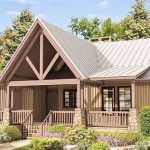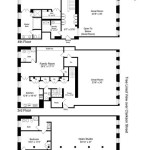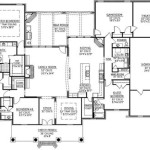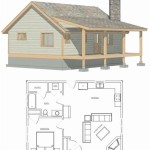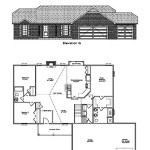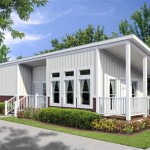Walkout Basement Home Plans: Expanding Living Space and Adding Value
Walkout basement home plans offer a unique opportunity to maximize living space and enhance property value by seamlessly integrating the lower level with the outdoors. Unlike traditional basements, walkout basements feature a grade-level exit, typically a sliding glass door or full-sized door, that provides direct access to a backyard, patio, or deck. This characteristic turns a traditionally dark and underutilized space into a bright, inviting extension of the main living area. Understanding the intricacies of designing and implementing walkout basement home plans is crucial for homeowners seeking to optimize their property's potential.
Walkout basements appeal to a wide range of homeowners, including those with sloped lots, growing families needing extra space, and individuals interested in generating rental income. The ability to connect indoor and outdoor living spaces adds a significant dimension to the home, blurring the lines between the interior and exterior environments. However, successful implementation of walkout basement home plans requires careful consideration of various factors, including site grading, drainage, structural integrity, and local building codes. Ignoring these aspects can lead to costly errors and compromise the overall functionality and aesthetics of the basement.
Site Considerations and Grading for Walkout Basements
The defining feature of a walkout basement is its direct access to the outside, which necessitates a properly graded lot. The land should slope away from the house, allowing for a portion of the basement wall to be exposed at grade level. This slope is essential for creating a functional exit and preventing water from pooling around the foundation. Site grading involves reshaping the landscape to achieve the desired slope, ensuring that water drains effectively away from the building. A professional surveyor can accurately assess the existing topography and develop a grading plan that meets the requirements of the walkout basement design.
Achieving the correct slope is not merely about aesthetics; it also plays a critical role in managing surface water runoff. Poor grading can lead to water infiltration, causing damage to the foundation and interior finishes. A well-designed grading plan incorporates swales, which are shallow depressions designed to channel water away from the house. These swales should be strategically placed to intercept runoff and direct it towards designated drainage areas, such as storm drains or natural watercourses. The grading plan should also consider the impact on neighboring properties, ensuring that water runoff does not negatively affect their land.
In some cases, significant excavation may be required to achieve the necessary slope for a walkout basement. This excavation can be costly and time-consuming, but it is an essential step in ensuring the long-term functionality and stability of the structure. The excavated soil must be properly disposed of or repurposed on the property. Retaining walls may also be necessary to support the excavated soil and prevent erosion. These walls must be structurally sound and designed to withstand the pressure of the surrounding soil.
Designing Functional and Appealing Walkout Basement Spaces
The design of a walkout basement should seamlessly integrate with the rest of the house, both aesthetically and functionally. The layout should consider the intended use of the space, whether it's a family room, home office, guest suite, or rental apartment. Natural light is a key factor in making a walkout basement feel inviting and comfortable. Large windows and sliding glass doors should be strategically placed to maximize the amount of sunlight entering the space. Light wells can also be used to bring natural light into areas that are below grade.
The use of appropriate materials is crucial for creating a warm and inviting atmosphere in a walkout basement. Durable and water-resistant flooring options, such as tile, laminate, or engineered hardwood, are ideal for this environment. Walls can be finished with drywall, paneling, or even exposed brick to add texture and visual interest. Proper insulation is essential for maintaining a comfortable temperature and reducing energy costs. Rigid foam insulation is a popular choice for basement walls, as it provides excellent thermal performance and is resistant to moisture.
Accessibility is another important consideration in walkout basement design. The exit to the backyard or patio should be easily accessible for all members of the household, including those with mobility limitations. Ramps or gently sloping walkways can be used to provide access for wheelchairs and strollers. Lighting should be planned to ensure that the exit is well-lit at night, improving safety and security. Adequate ventilation is also crucial for maintaining air quality and preventing moisture buildup.
Addressing Moisture and Structural Integrity in Walkout Basements
Moisture management is a paramount concern in basement construction, and walkout basements are no exception. Proper waterproofing is essential to prevent water from seeping through the foundation walls and causing damage to the interior finishes. This typically involves applying a waterproof membrane to the exterior of the foundation walls and installing a perimeter drainage system to collect and redirect groundwater. The perimeter drain, often referred to as a French drain, consists of a perforated pipe surrounded by gravel, which allows water to flow freely towards a sump pump or other drainage outlet.
In addition to waterproofing the exterior walls, it's also important to address moisture issues on the interior. This can be achieved by installing a vapor barrier behind the finished walls to prevent moisture from migrating from the concrete foundation. Dehumidifiers can also be used to control humidity levels in the basement. Proper ventilation is crucial for preventing moisture buildup and maintaining air quality. Exhaust fans should be installed in bathrooms and kitchens to remove excess moisture and odors.
Structural integrity is another critical aspect of walkout basement construction. The foundation walls must be able to withstand the lateral pressure of the surrounding soil. This is particularly important in areas with expansive soils, which can exert significant pressure on the foundation walls. The foundation walls should be designed by a structural engineer to ensure that they are adequately reinforced to withstand these forces. Proper backfilling around the foundation walls is also essential to prevent settlement and cracking. The backfill material should be compacted in layers to ensure that it is stable and does not shift over time.
Furthermore, the connection between the basement walls and the upper floors must be structurally sound. Load-bearing walls and support columns should be properly positioned to distribute the weight of the upper floors evenly. Any modifications to the structural components of the house should be reviewed and approved by a structural engineer to ensure that they do not compromise the integrity of the building.
Navigating Building Codes and Regulations for Walkout Basements
Walkout basement construction is subject to local building codes and regulations, which are designed to ensure the safety and well-being of occupants. These codes typically address aspects such as fire safety, egress, ventilation, and structural integrity. Obtaining the necessary permits before starting construction is essential to avoid costly fines and delays. The permit application process typically involves submitting detailed plans and specifications to the local building department for review and approval.
Egress requirements are particularly important in walkout basement construction, as the basement must have at least one means of escape in case of fire. This typically involves an exterior door or a window that meets specific size and height requirements. The egress window must be large enough to allow occupants to escape and firefighters to enter easily. The window well must also be designed to prevent entrapment and provide a clear path to the outside. In some cases, a second means of egress may be required, depending on the size and layout of the basement.
Fire safety is another key consideration in walkout basement construction. Smoke detectors must be installed in all sleeping areas and on each level of the basement. Fire-resistant materials should be used for walls and ceilings to slow the spread of fire. Proper ventilation is essential for removing smoke and toxic fumes in case of a fire. The electrical system must also be designed to meet the requirements of the building code. Ground fault circuit interrupters (GFCIs) should be installed in all wet areas, such as bathrooms and kitchens, to prevent электроcution.
Furthermore, compliance with accessibility regulations, such as the Americans with Disabilities Act (ADA), may be required, especially if the basement is intended for rental or commercial use. These regulations specify requirements for ramps, doorways, and other features that make the space accessible to people with disabilities. Consulting with a qualified architect or contractor who is familiar with local building codes and regulations is essential for ensuring that the walkout basement meets all applicable requirements.
In conclusion, walkout basement home plans offer a valuable way to expand living space, add value to a property, and create a seamless connection between indoor and outdoor environments. However, careful planning, attention to detail, and adherence to building codes are essential for successful implementation. By addressing site considerations, designing functional spaces, managing moisture, ensuring structural integrity, and navigating building regulations, homeowners can transform their basements into valuable assets that enhance their quality of life.

Walkout Basement House Plans With Photos From Don Gardner Houseplans Blog Com

Modern Farmhouse Plan W Walkout Basement Drummond House Plans

Walkout Basement House Plans To Maximize A Sloping Lot Houseplans Blog Com

House Plan 3 Bedrooms 2 5 Bathrooms 3992 V3 Drummond Plans

Doncaster 5256 4 Bedrooms And 3 5 Baths The House Designers

Plan 99961 Sloping Lot House With Walkout Basement Hills

Small Cottage Plan With Walkout Basement Floor

Rustic Mountain House Floor Plan With Walkout Basement Lake Plans Cottage

Don Gardner Walkout Basement House Plans Blog Eplans Com

Amazing House Plans With Walkout Basement 3 Ranch Lake Farmhouse

